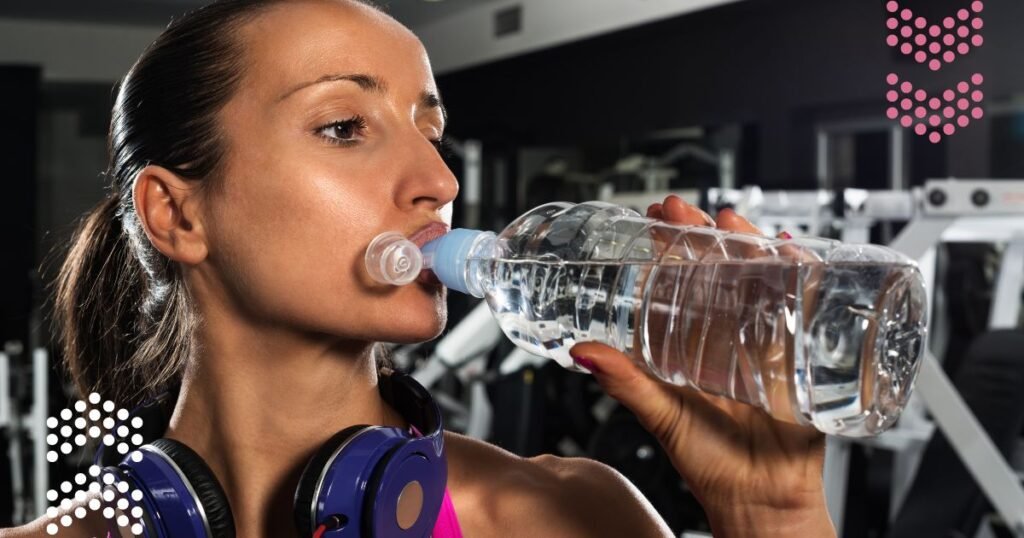How to Adjust Your Caloric Intake Based on Activity Levels as a Woman
Maintaining the right balance of caloric intake is essential for weight management, energy levels, and overall health. Women, in particular, have unique metabolic needs that change depending on various factors such as age, hormonal fluctuations, and activity levels. To achieve your health and fitness goals, understanding how to adjust your caloric intake according to how active you are is key.
While calorie intake is important, the quality of those calories matters just as much. Adjusting the amount of food you consume based on your lifestyle and activity level ensures you give your body the proper fuel it needs to function optimally. This article will walk you through why adjusting caloric intake is important and how to do it based on varying levels of activity.
Understanding the Basics of Caloric Needs for Women
When discussing calories, it’s important to know that not all calories are created equal. Your caloric intake refers to the number of calories you consume daily through food and beverages. For women, these calorie needs can vary greatly depending on several factors, such as age, body composition, muscle mass, and hormonal health. This is why a one-size-fits-all approach rarely works.
Calories are a measure of energy. The calories you consume provide energy for your body to perform essential functions like breathing, circulating blood, and even thinking. When you eat too few calories, your body can’t perform these functions properly, leading to fatigue, slower metabolism, and muscle loss. Conversely, too many calories can lead to weight gain and other health problems.
To maintain a healthy weight, or lose or gain weight, you need to understand the concept of energy balance. This is where your caloric needs come into play. Your caloric needs are determined by various factors, including your activity level, and you need to adjust them to align with your personal fitness and health goals.
The Science Behind Activity Levels and Energy Expenditure
Your Total Daily Energy Expenditure (TDEE) is the total number of calories you burn in a day. Understanding TDEE is essential for making adjustments to your caloric intake based on activity levels. TDEE is made up of four main components:
1. Basal Metabolic Rate (BMR)
Your BMR represents the number of calories your body needs to maintain basic life functions while at rest, such as breathing and regulating body temperature. For women, BMR can vary depending on factors like muscle mass, age, and hormonal balance.
2. Physical Activity Level (PAL)
PAL is the calories burned through any form of movement, whether it’s structured exercise like a gym session or non-exercise activities such as walking or gardening. Women with higher activity levels require more calories to meet their energy needs, while women with lower activity levels need fewer calories.
3. Thermic Effect of Food (TEF)
This refers to the number of calories your body burns during the digestion, absorption, and metabolism of food. Interestingly, different foods have varying thermic effects. For example, protein has a higher thermic effect than carbohydrates or fats, meaning your body burns more calories digesting protein.
4. Non-Exercise Activity Thermogenesis (NEAT)
NEAT includes the calories burned through non-exercise activities such as fidgeting, standing, or even simple movements like reaching for something. Increasing NEAT can be a great way to boost caloric burn without structured exercise.
All of these components combined contribute to how many calories you burn in a day. The more active you are, the higher your TDEE will be. This is why understanding your activity level is so crucial for adjusting your caloric intake.
How to Calculate Your Caloric Needs Based on Activity Levels
To adjust your caloric intake based on your activity level, the first step is to calculate your TDEE. This starts with determining your Basal Metabolic Rate (BMR), which you can calculate using a formula like the Mifflin-St Jeor Equation. Once you have your BMR, you can adjust it based on how active you are throughout the day.
Here’s how to calculate your TDEE based on activity level:
- Sedentary (little to no exercise): BMR x 1.2
- Lightly active (light exercise or sports 1-3 days a week): BMR x 1.375
- Moderately active (moderate exercise 3-5 days a week): BMR x 1.55
- Very active (hard exercise or sports 6-7 days a week): BMR x 1.725
- Extremely active (physical job or very intense exercise daily): BMR x 1.9
This method gives you a more accurate picture of how many calories you should consume daily to either maintain, lose, or gain weight, based on how active you are.
Matching Caloric Intake to Your Goals and Activity Levels
After calculating your TDEE, it’s time to adjust your caloric intake to match your specific goals. For example, if your goal is weight loss, you’ll want to eat fewer calories than you burn. A typical recommendation is to create a calorie deficit of about 500 calories per day for a gradual and sustainable weight loss of about 1 pound per week.
On the other hand, if your goal is to gain muscle, you’ll need to consume more calories than you burn. Increasing your caloric intake by 250 to 500 calories per day can help you gain lean muscle mass, especially if you are following a strength training program.
It’s important to remember that drastically cutting or increasing your caloric intake can be harmful. Making small, incremental adjustments is the best way to achieve your goals in a sustainable way.
Adjusting Caloric Intake for Various Activity Levels
Sedentary Women
If you lead a mostly sedentary lifestyle with little to no exercise, your caloric needs will be lower. This means you will need to focus more on controlling your portion sizes and making sure that the calories you do consume are coming from nutrient-dense sources such as lean proteins, vegetables, and whole grains.
Lightly Active Women
Lightly active women who engage in light exercise or have an active job should consume slightly more calories than sedentary women. This means adding more energy-rich foods like healthy fats and complex carbohydrates to your diet. It’s also important to ensure you’re getting enough protein to support muscle repair and recovery.
Moderately Active Women
Women who exercise regularly but aren’t intensely active fall under the moderately active category. These women should focus on balanced meals with a good mix of protein, carbohydrates, and healthy fats. Consuming sufficient calories to fuel your workouts is crucial to maintaining muscle mass and energy levels.
Very Active Women
Women who are very active, whether through exercise or physically demanding jobs, will need even more calories to support their energy expenditure. In this case, focusing on high-quality carbohydrates and lean protein is essential to prevent fatigue, promote recovery, and sustain energy levels.
Extremely Active Women
Women who are extremely active, such as athletes or those who engage in intense exercise every day, have significantly higher caloric needs. These women should increase their caloric intake by incorporating more nutrient-dense foods and ensuring they are eating enough to sustain their high level of activity. Carbohydrates and protein should be a major part of their diet to fuel workouts and aid in muscle repair.
Common Mistakes When Adjusting Caloric Intake
One of the most common mistakes women make when adjusting their caloric intake is underestimating their activity level. This can result in eating too few calories, leading to fatigue, muscle loss, and even a slowed metabolism. On the other hand, overestimating your activity level can lead to consuming too many calories, which can result in weight gain.
Another mistake is relying on crash diets. These diets may provide short-term results, but they can have long-term consequences such as nutrient deficiencies, muscle loss, and metabolic damage. Instead, focus on making small, sustainable changes to your diet and caloric intake over time.
The Role of Macronutrients When Adjusting Calories
Calories are important, but so is the quality of the food you consume. Macronutrients – proteins, carbohydrates, and fats – play a crucial role in your body’s ability to function and perform well. For example, protein is essential for muscle repair and recovery, especially if you are engaging in regular exercise.
Carbohydrates are your body’s main source of energy, especially during physical activity. Women who are more active should focus on consuming healthy, complex carbohydrates like whole grains, fruits, and vegetables to fuel their workouts and daily activities.
Fats, particularly healthy fats from sources like avocados, nuts, and olive oil, are also important for overall health. They help keep your hormones balanced and provide a slow, steady source of energy.
Special Considerations for Women at Different Life Stages
Women’s caloric needs change at different life stages, including pregnancy, postpartum, and menopause. During pregnancy, women need to increase their caloric intake to support the growing baby. After giving birth, caloric needs may decrease slightly, but it’s important to consume enough to support breastfeeding, if applicable.
During menopause, women’s metabolism tends to slow down, leading to a natural decrease in caloric needs. Adjusting your diet during this time is important to avoid weight gain and maintain muscle mass.
The Importance of Listening to Your Body and Tracking Progress
Listening to your body is crucial when adjusting your caloric intake. If you feel constantly tired, hungry, or your workouts are suffering, these may be signs that you need to adjust your caloric intake or your macronutrient balance.
Tracking your progress is also essential. By monitoring your weight, body measurements, and energy levels, you can determine whether your current caloric intake is aligned with your goals. You can also explore more women’s weight loss resources for additional guidance.
Conclusion
Adjusting your caloric intake based on your activity levels is essential for optimal health, fitness, and overall well-being. Whether your goal is to lose weight, gain muscle, or maintain your current health, knowing how to match your caloric intake to your activity level will help you get there.
For more information about diet and weight loss, visit diet and weight loss resources. Also, don’t forget to explore the tools and resources available on our website, including calculators, recipes, and fitness programs to help you adjust your caloric intake and reach your goals.


